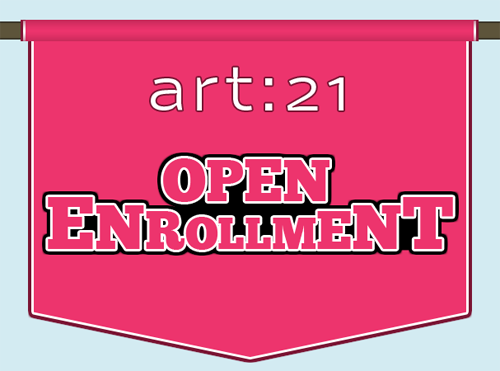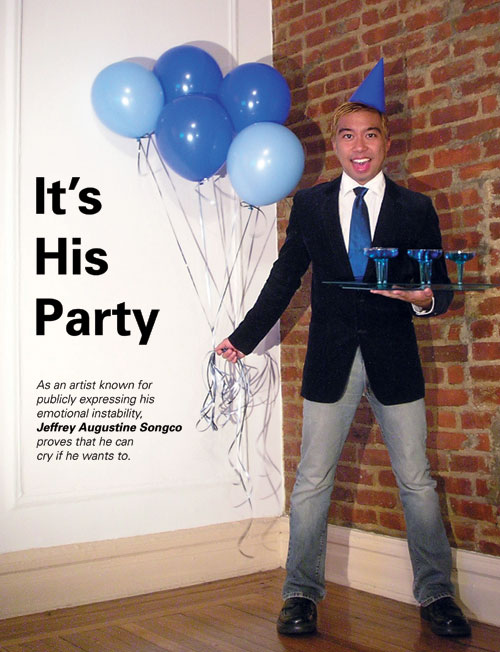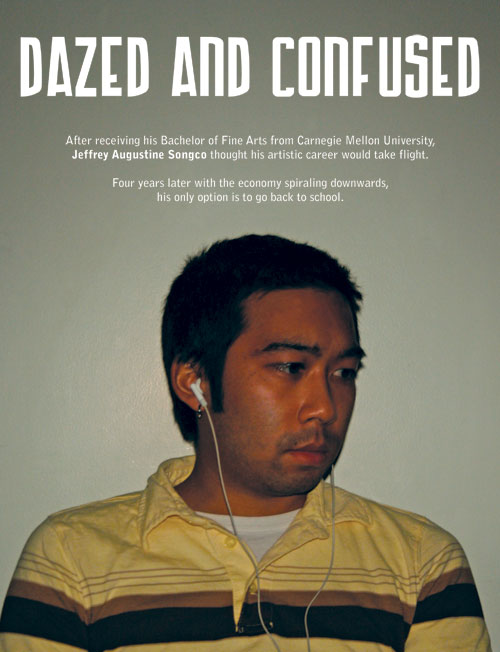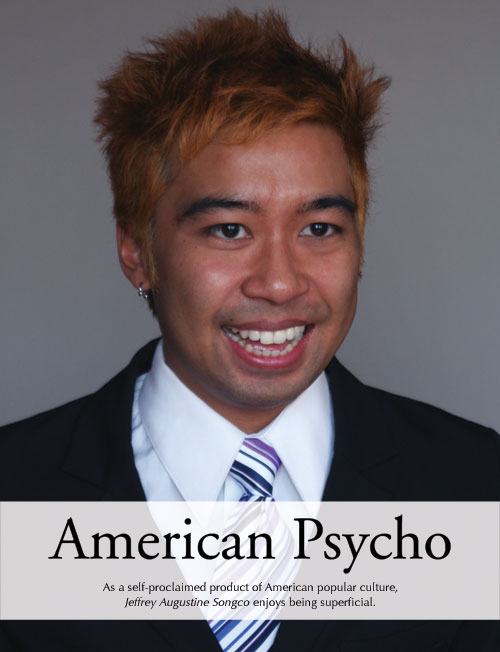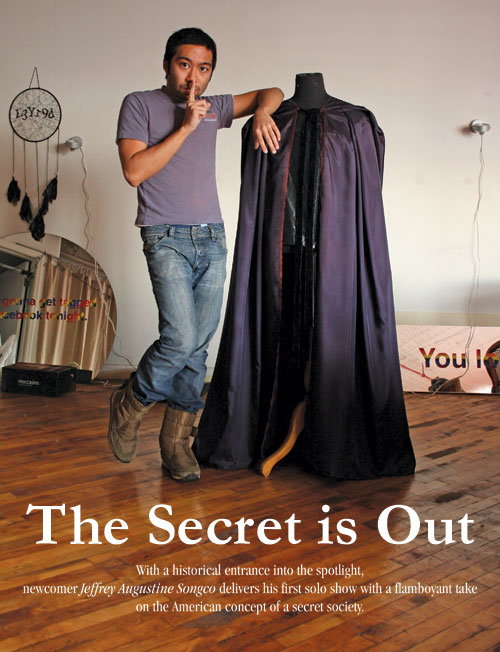You are an artist living in Bushwick, Brooklyn. It’s been a few years since you received your Bachelor of Fine Arts in Art degree from Carnegie Mellon University. You work as a freelance graphic and web designer and actor headshot photographer. You enjoy creating art and enjoy showing your artwork to others, so you find various opportunities to share your art with others. You participate in the Bushwick Open Studios. You apply to as many open calls for artwork as you can find on the Internet, occasionally being seduced into a pay-to-play call or donation auction event. You also create an artist’s website, but the web traffic is more like a parking lot, so you start blogging, tweeting, and uploading content to various online art communities to engage in some kind of conversation with other artists but the simplistic comments of “nice work” and “awesome stuff, man” make you sorta depressed. You meet with a Chelsea gallerist but she’s disinterested in your CV until the letters M-F-A are printed onto the paper since “that painting over there is a couple thousand more than that painting here because that artist over there went to Columbia.” So you apply to Columbia thinking you’re a shoe-in since your mom and sister got their graduate degrees there, but you’re rejected.
If you decide to give up, update your website. A security breach in your web hosting provider’s internal system devastates .0006% of online content originating in the United States and any computers accessing the affected information. Your website was erased and the virus attaches to your computer. All your artwork you’ve ever documented and digitally archived is now lost forever. THE END
If you decide to reapply to graduate school, continue reading.
You reapply to graduate school, and this time, you’re accepted to San Francisco Art Institute. You pack up some of your artwork and bring it to San Francisco where you continue to develop the body of work you have been working on for a few years. You complete the first semester with honors but you are unsatisfied with the hype.
If you decide to give up, quit grad school. You move back to Bushwick and update your website with the work you made this semester. THE END
If you decide to continue with grad school, continue reading.
The second semester begins and you choose to be more active in the social aspect of school since ‘excelling academically’ as evidenced on your report card was unsatisfying. You are nominated and selected as one of the co-chairs of the Legion of Graduate Students (LOGS). With this position, you and your fellow co-chairs are responsible for distributing money towards graduate student activities and events, including the highly anticipated MFA Thesis after-party. Graduate students are invited to submit proposals to LOGS for financial assistance. You disagree with one particular proposal.
If you decide to deny the proposal, the opening reception for the proposed gallery show will be a complete failure. Visitors are left hungry and sober. As you walk down the hallway of SFAI’s Graduate Center, students shy away from your gaze in disgust. You go to the computer cluster to update your website. THE END
If you decide to approve the proposal, continue reading.
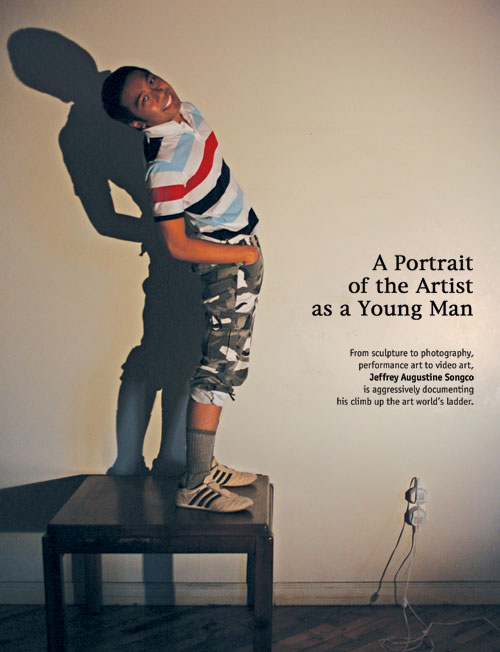
Jeffrey Augustine Songco, "Headline 6 (A Portrait of the Artist as a Young Man)," 2009. Courtesy the artist.
You approve the proposal but feel so dirty about it that you volunteer at a dog adoption agency for a few months. Your social anxiety continues to fluctuate as the various responsibilities of the artist in the twenty-first century begin to weigh on you. You realize that some of your appearances at opening receptions, dinners, and parties are just as difficult to cope with as the solitary times sitting in your studio. After your fifth critique in six months, you question your entire existence and wonder how your classmates keep it all together. You take a chance on yet another open call, this time for writers on the Art21 Blog. The first year is over and the big MFA Thesis show arrives. You congratulate all your graduating classmates and wonder what you will do this time next year.
The summer does not heat up in San Francisco, known to have the coldest summer in the world. One source of heat penetrates the ice: Bravo’s Work of Art: The Next Great Artist. You are mildly captivated by the condensed MFA program on your television and question your own participation in the show.
If you decide to apply to participate in the show, quit grad school. The contractual obligations of the show require your presence during the 2010-2011 school year. You submit your application to the show and are advanced to the final round. You are typecast as the gay Asian intellectual and ultimately lose the spot to a taller gay Asian intellectual whose height compliments the other contestants and thus provides a more aesthetically pleasing crit wide shot. You move back to Bushwick and update your website. THE END
If you decide not to apply to the show and continue with grad school, continue reading.
Your third semester is immediately overloaded when you decide to join the gym with a private trainer, TA an all-day class on Friday, and attempt to make artwork superficially unrelated to anything you’ve ever made before. You begin to work with video and social sculpture. Your social anxiety continues to make it difficult for you to network normally, but your energetic and unorthodox method of deploying extreme neurosis has made it possible to achieve the same networking results. You turn 27 years-old, and with Thanksgiving around the corner, you are excited by the possibilities of the final semester in January.
If you decide to kill yourself now, you join the elite group of creative geniuses known as the 27 Club. Janis Joplin and Kurt Cobain welcome you into the gates of Heaven. Back on Earth, your Facebook friends and Twitter followers share your artwork with the world. San Francisco Art Institute develops a graduate scholarship in your honor. Every major art publication covers your story and your artwork is acquired by Larry Gagosian. The Federal Advisory Committee on International Exhibitions postpones the United States duo of Jennifer Allora and Guillermo Calzadilla to the 2013 Venice Biennale, and replaces them with you. You win the Golden Lion and your parents place it on the fireplace mantel next to the urn filled with your ashes. Your parents don’t understand the art thing, so they hire a graduate student to update your website. THE END
If you decide to finish your last semester of grad school, you have six more critiques until you graduate. After the second critique, your professor pulls you aside and tells you that her friend is curating the 2012 Whitney Biennial and that she’d like her buddy to visit your studio. On your 28th birthday, your studio assistant brings his friend to your party and the two of you instantly fall in love. The opening reception of the Whitney Biennial is fabulous and you and your boyfriend are on a high because you’re the belle of the ball and his company went public earlier in the week. “Being in love is more important than any art I could ever create,” you tell Vanity Fair for their special issue on Art. You decide that you’re not ready to fulfill the role of the artist in the twenty-first century, so you bow out of the art world. Your name joins the list of artists who appear in Whitney Biennials and are never heard from again. You and your boyfriend decide to move to the suburbs and start an interior design company that focuses on local and sustainable material. You tell your boyfriend that he can deal with the company’s online presence. THE END

